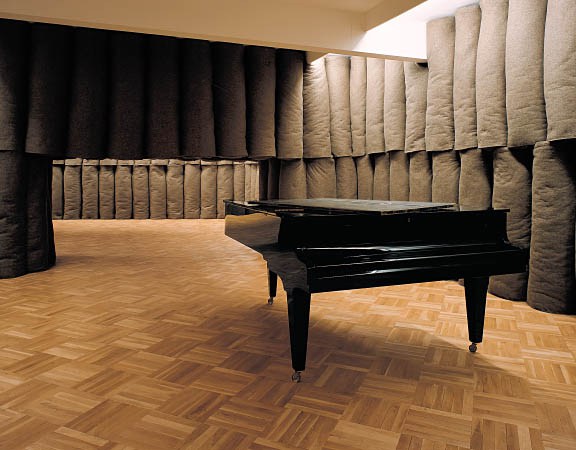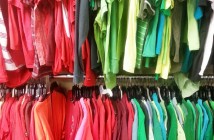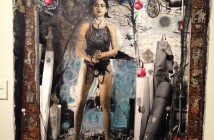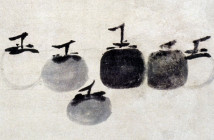
Joseph Beuys’s installation Plight is a synesthetic experience. The abundance of telltale felt suffocates the reverberating acoustics of the space forming a visual tension with the piano. The tactile give of the material absorbs rather than deflects. This imbues the installation with the palatable thick mustiness of an attic. The piano is muffled, enveloped. Between it and the felt reams of narrative unfold in hushed tones. The installation as reliquary illuminates the sacred attributes of the aesthetic object.
Joseph Beuys often spoke of the imagination of the object indicating the narrative capacity innate to material things. This does not mean that the viewer takes in an object and projects or grafts a story onto it, but that the object bequeaths this possibility to the individual.
Most of his art employs the materials of fat and/or felt. This practice stems from his self-authored origin myth in which he claimed that after a plane crash in the snowy mountains of Crimea, (he was an aircraft radio operator and pilot during the war) a nomadic tribe swathed him in felt and fat thus saving his life. The latter part of this story appears specious (his plane did crash killing his pilot, but Beuys recovered in a military hospital, most likely without restorative swaddling in either fat or felt).
I am not interested in the veracity of this account (nor was Beuys) but its compelling allure. What constitutes the popularity of this and other similar near-death encounters with the mystical? Perhaps, as Freud contends, we collectively suffer certain historical psychic wounds. As a psychic defense, we accumulate a cache narrative in the form of talisman. This explains the fetishistic appeal of certain objects, souvenirs, and artifacts. Nostalgia for a real or imagined occult imbues the fetishized object.
Beuys studied medicine, but turned to art after WWII because he believed that artwork as ‘social sculptures’ possessed transformative and curative properties. Although Beuys earned as many aspersions as accolades for his shamanistic practices, his notoriety may indicate a desire for a relationship to the object that is not exhausted in our current obsessive consumption of electronics.
The tangible lost its ability to make an authoritatively mystic claim over the viewer. We inhabit a world that has disenfranchised the occult. The persuasiveness of Beuys’ origin myth exposes a lack, as does the consequent resentment when it was proven fallacious. Beuys presciently perceived the redemptive possibility substantiated through a sacred or profound aesthetic experience. This possibility lay in direct contrast to the current impoverished narratives of the object. Art was drained of its sacred or ritualistic ability to undermine pervasive empty specatorship. The disappointment of ready-mades in a society inundated with mass-produced consumables and the irony of Pop Art illumed a culture-industry devoid of the cultic experience of the object. Beuys sought to retrieve the mysticism of aesthetic experience and reimbue the object with the fetishistic. The cultic narrative capacity of his art reflected an inverse lack, a society unconscious of its own psychic impoverishment and desires.
Image information: Joseph Beuys, Plight, 1986. Installation




